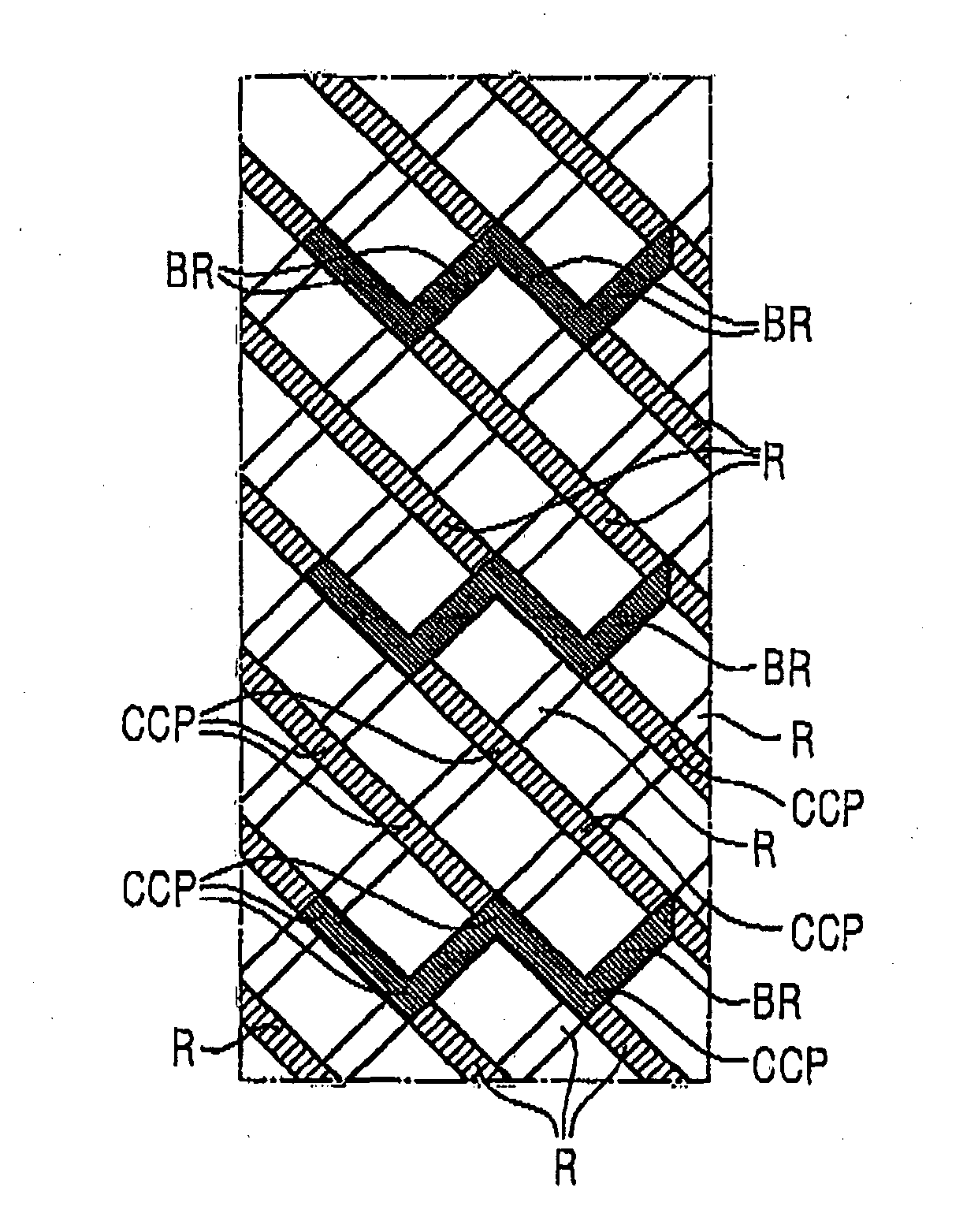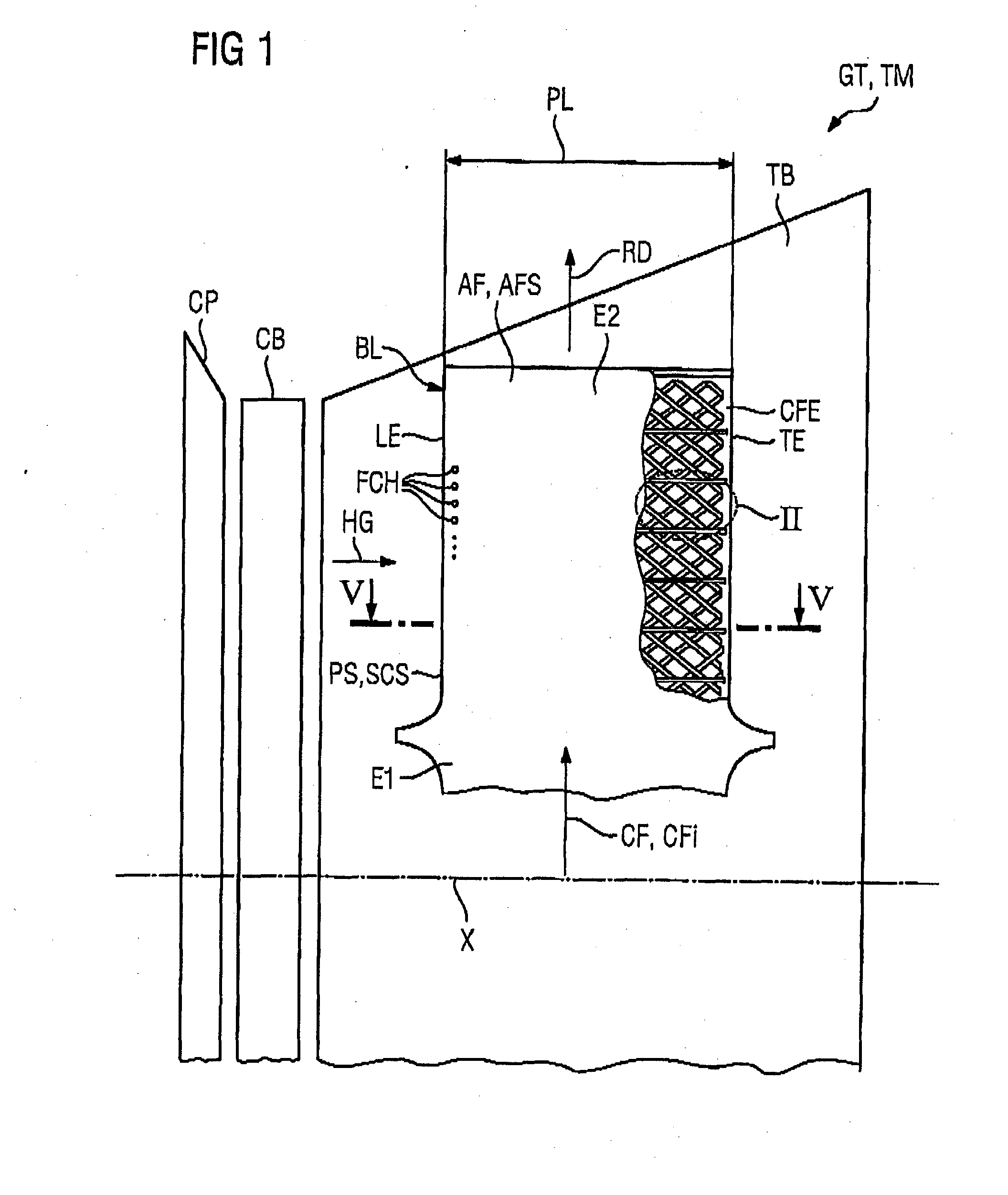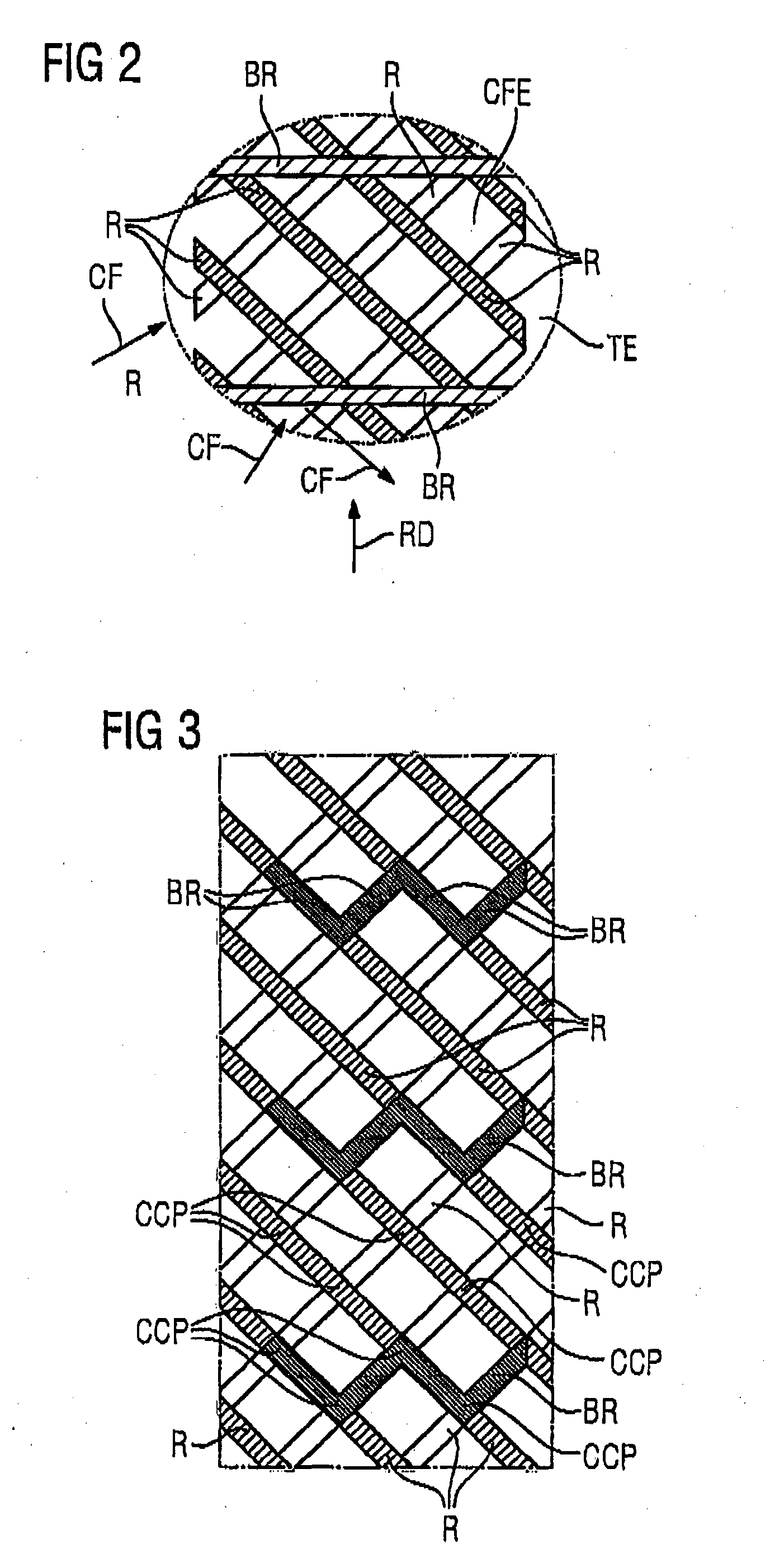Airfoil with cooling passages
a technology of airfoil and cooling passage, which is applied in the field of airfoil, can solve the problems of difficult cooling effective, difficult to meet the mechanical stress of operation, so as to improve the cooling concept efficiency of the blade or the airfoil improve the thermal efficiency of the gas turbine, and reduce the secondary air consumption
- Summary
- Abstract
- Description
- Claims
- Application Information
AI Technical Summary
Benefits of technology
Problems solved by technology
Method used
Image
Examples
Embodiment Construction
[0021]FIG. 1 shows an airfoil AF according to the invention schematically.
[0022]Further FIG. 1 shows—simplified—a turbo machine TM, respectively a gas turbine GT comprising a compressor CP a combustor CB and a turbine TB, all of which are schematically indicated in FIG. 1. Also indicated is a rotor axis X extending perpendicular to a radial direction RD, which coincides with a lengthwise direction of said airfoil AF. The airfoil AF of a blade BL for said turbo machine TM respectively said gas turbine GT comprises a leading edge LE and a trailing edge TE, wherein the leading edge is the most upstream part of the airfoil AF with regard to a stream of hot gas HG generated by said combustor CB and flowing along the airfoils surface AFS. The airfoil AF extends from a first end E1 to a second end E2 and a cooling fluid CF enters an inner cavity of the airfoil AF through a cooling fluid inlet CFI at said first end E1. While a part of the cooling fluid CF is ejected into the hot gas HG thro...
PUM
 Login to View More
Login to View More Abstract
Description
Claims
Application Information
 Login to View More
Login to View More - R&D
- Intellectual Property
- Life Sciences
- Materials
- Tech Scout
- Unparalleled Data Quality
- Higher Quality Content
- 60% Fewer Hallucinations
Browse by: Latest US Patents, China's latest patents, Technical Efficacy Thesaurus, Application Domain, Technology Topic, Popular Technical Reports.
© 2025 PatSnap. All rights reserved.Legal|Privacy policy|Modern Slavery Act Transparency Statement|Sitemap|About US| Contact US: help@patsnap.com



